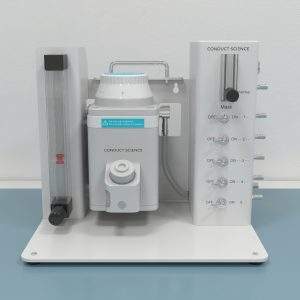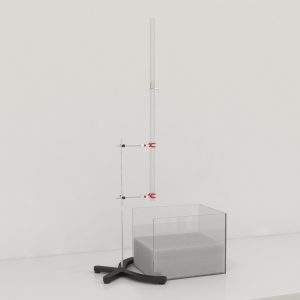$2,286.00 – $4,963.00Price range: $2,286.00 through $4,963.00
Precise positioning of mouse brains
Stereotaxic for Mouse only – Manual and Digital version.
Animal stereotaxic instruments are important research tools in the fields of neuroanatomy, neurophysiology, neuropharmacology, and neurosurgery. They are used for directed injections, stimulation, lesioning, evoked potentials, and other operations on neural structures. They can be used for establishing animal models of Parkinson’s disease, epilepsy, brain tumors, learning and memory, neural stem cell transplantation, brain ischemia, and other research areas.
Only for stereotaxic positioning of mouse brain.
Choose configuration: single arm or double arm, standard version or digital version.

Conduct Science is a premier manufacturer of research infrastructure, born from a mission to standardize the laboratory ecosystem. We combine industrial-grade precision with a scientist-led tech-transfer model, ensuring that every instrument we build solves a real-world experimental challenge. We replace "home-brew" setups with validated tools ranging from microsurgical suites to pathology systems. With a track record of >1,600 institutional partners and hundreds of citations, our equipment is engineered to minimize human error. We help you secure more data for less of your budget, delivering the reliability required for high-impact publication.

bool(false)


bool(false)
The Conduct Science Stereotaxic instrument uses landmarks on the surface of the animal’s skull (such as the Bregma ) as basic reference points and determines the position of a neural structure (brain region) through the directional movement of a three-dimensional manipulator arm. The device can then be used to perform injections, stimulations, impairment, guided positioning and other operations on the specific brain region . This device can also be used in conjunction with optogenetics, two-photon, endogenous brain imaging, fiber optic recording, electrophysiology and other systems.
Model | Version | Specification |
|---|---|---|
CS-PSP-SM300 | Manual | Single Arm |
CS-PSP-SM400 | Manual | Double Arm |
CS-PSP-SM300D | Digital | Single Arm |
CS-PSP-SM400D | Digital | Double Arm |
The three-dimensional operating arm is designed with a concentric directional transmission mechanism to maintain the consistency and accuracy of the transmission direction.
The operating arm replaces the traditional metal-to-metal “hard grinding” transmission (which wears fast) and adopts the combination of screw rod and rolling mechanism to maintain the stability and accuracy of the coordinate axis over time.
Key components such as transmission screws and thread sleeves are molded to ensure stability and uniformity when in use.
The use of connecting joints greatly reduces errors caused by multiple joint connections and improves stability.
The screw drive fixes the head, front teeth, nose bridge, and ear canal, which makes the adjustment smooth and precise, reducing the tedious operation steps of head fixation.
| Arm | Single, Double |
|---|---|
| Version | Manual, Digital |
You must be logged in to post a review.
There are no questions yet. Be the first to ask a question about this product.
Reviews
There are no reviews yet.